This was published 6 years ago
Off-limits no more: Why you should visit these countries with a bad reputation
By Ute Junker
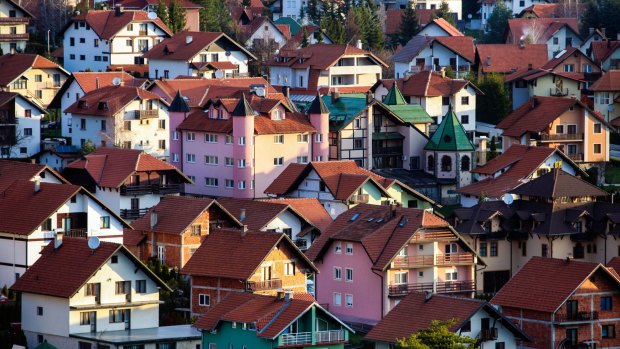
Popularity growing: Hotels and villas in Zlatibor, Serbia.Credit: Alamy
A damaged reputation can be hard to rescue. Vivid images of a natural or man-made disaster splashed across our screens can crush a country's tourism industry overnight, but staging a comeback often proves much more difficult. For every country like Nepal – where tourism has bounced back after a devastating earthquake two years ago – there is a place like Nicaragua, a beautiful destination still struggling to attract visitors almost three decades after its civil war ended.
"Media coverage can have a long-term impact," says Intrepid Travel's CEO, James Thornton. "Take a country like Colombia. It has long been a safe place to visit, but plenty of popular television shows still create an image of cocaine cartels and violence."
On the other hand, if a country can convey the message that the welcome mat is well and truly out, they may find themselves becoming the next big thing. That is what happened in Myanmar, after the opposition lifted its tourism boycott in 2009. "Everyone wanted to be the first to go there," Thornton says, though, of course, given the on-going Rohingya crisis, there has been talk in some quarters about reinstituting the ban.
For developing countries, tourism dollars – or the lack of them – can make a drastic difference to the economy. Take Egypt, once a bucket list destination, where tourist numbers have been down since the revolution of 2011.
Although arrivals have been up in the last few years, they are still only around half of what they were eight years ago – eight million visitors last year, down from almost 15 million in 2010. That has had massive ramifications for the country.
"Tourism is unique in that affects every part of the society, from the guy who grows the tomatoes served in hotel restaurants to the guy who owns the hotels," says Dennis Bunnik, managing director of Bunnik Tours.
Bunnik Tours has remained committed to Egypt even after a string of incidents, the most recent being a hot air balloon accident over Luxor. Bunnik says the country's reputation as a dangerous place has been exaggerated.
"You can never guarantee that nothing is going to happen, but the risk profile for different areas can be quite different," he says. "Yes, you can have issues on the Sinai Peninsula, especially the north, and in the western desert, but the classic tourist stuff along the Nile doesn't have a high risk profile. Reputable operators understand what's safe and what's not."
Bunnik, who also heads up the Council of Australian Travel Operators, questions the warning about Egypt on the Australian Government Smart Traveller website, which advises reconsidering your need to travel – a warning which contrasts with the much milder "exercise normal safety precautions" advice for the United Kingdom.
Several Australians have been hurt and injured in terrorist attacks, whereas no Australians have lost their lives in terror attacks in Egypt. "It doesn't make sense," Bunnik says. "Such discrepancies harm the credibility of the whole system."
Visiting a comeback country has plenty of upsides. When visitor numbers are low, so are prices – and locals will go out of their way to make you feel welcome. So if you are ready to take a chance on a post-disaster destination, try one of these underrated gems.
THE COUNTRY Rwanda
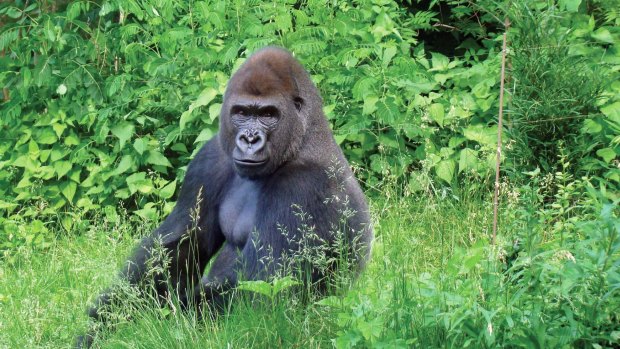
THE BACKSTORY In 1994, the world watched in horror as Rwanda plunged into a genocide that killed an estimated 70 per cent of the Tutsi minority.
THE COMEBACK Political controversies and misgivings aside, President Paul Kagame, the man who ended the genocide, has made huge strides in rebuilding his devastated country, with Rwanda scoring impressively across a range of indicators from public health to free Wi-Fi on transport. Recognising that the country's wild gorilla population is a major drawcard, Rwanda has invested heavily in high-end tourism, with luxury operators such as Wilderness Safaris and One & Only opening five-star lodges in the country.
MUST DO The gorillas of Volcanoes National Park are what everyone comes to see, but Rwanda has other highlights, including the wildlife-rich Nyungwe Forest National Park, with its chimpanzees, and Lake Kivu, one of Africa's Great Lakes.
STATUS AND THREATS Rwanda is one of the safest countries in East Africa, but the Australian Government's Smart Traveller (smartraveller.gov.au) website advises a high degree of caution, due to the risk of violence and criminal activity.
ESSENTIALS June to September is the best time to visit. Adventure World's three-day Gorillas in the Mist includes visit to local villages as well as gorilla trekking. From $3325. See rwandatourism.com, adventureworld.com.au
THE COUNTRY Nicaragua
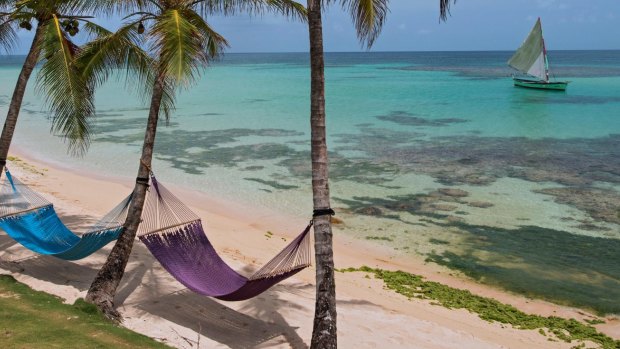
Credit: Alamy
THE BACKSTORY Following the 1979 revolution, Nicaragua endured a decade-long civil war between the Sandinista regime and the CIA-backed Contra rebels.
THE COMEBACK It has taken a surprisingly long time for Nicaragua to shake off the lingering shadow cast by the war. However, tourism is growing slowly but steadily. While it welcomed a record 1.4 million visitors in 2015, that is only half as many travellers as visited neighbouring Costa Rica.
MUST DO Just like Costa Rica, Nicaragua is a paradise for fans of eco-adventure, from the tranquil Lake Nicaragua, Central America's largest lake, to surf spots such as San Juan del Sur and the serene Little Corn Island off the Caribbean coast. The country's many volcanoes offer some unforgettable experiences, from ashboarding to swimming in crater lakes.
STATUS AND THREATS Nicaragua may be one of Latin America's poorest countries, but it has one of the lowest homicide rates in the region. Nonetheless, Smart Traveller advises a high degree of caution due to the risk of crime.
ESSENTIALS The best time visit is between November and April. Tucan Travel's 15-day Scenic Granada tour includes seven days in Nicaragua. From $2191. See visitnicaragua.us, tucantravel.com
THE COUNTRY Iceland
THE BACKSTORY The global financial crisis of 2008 hit Iceland hard: the country's banks went broke, plunging the country into a deep depression.
THE COMEBACK Strangely enough, the financial crisis, and an accompanying dramatic drop in prices, was one of the factors which led to Iceland's reinvention as a genuine tourism hotspot. The other was the eruption of the Eyjafallajokull volcano in 2010. The international media coverage showcased the island's otherworldly scenery, leading to a surge in interest from travellers (see Status and Threats, below).
MUST DO Iceland is all about the great outdoors, from volcanoes to glaciers, thermal pools to ice tunnels. Don't-miss destinations include the dramatic Gullfoss double waterfall, the Strokkur geyser and the thermal waters of the Blue Lagoon.
STATUS AND THREATS Iceland is now confronting a new threat: overtourism. Two million tourists visited Iceland in 2017, a country with a population of just 300,000. That requires investing in infrastructure: among other things, the country is building a large number of new public toilets, and is allowing national parks to charge entrance fees. Smart Traveller advises exercising normal safety precautions.
ESSENTIALS To avoid the peak season crowds, try travelling in May or June. Trafalgar Tours' 10-day Ultimate Iceland includes highlights such as Gullfoss, the Snæfellsnes Peninsula and the Blue Lagoon. From $7793. See inspiredbyiceland.com, trafalgar.com
THE COUNTRY Egypt
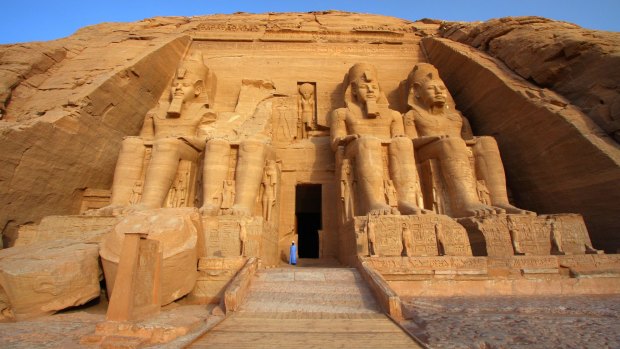
Credit: Alamy
THE BACKSTORY Following a violent revolution in 2011, Egypt's tourism industry suffered a steep decline, thanks to a series of security and safety scares including the downing of a Russian airliner filled with tourists in 2015.
THE COMEBACK Egypt's visitor numbers are slowly rising, and security at airports and major tourist sites has been boosted.
MUST DO Few countries are as packed with ancient relics as Egypt. From the pyramids of Giza to the tombs of the Valley of the Kings, the magnificent temples of Karnak and Luxor and the mighty sight of Abu Simbel, these mighty monuments – some of which are more than 3000 years old – are among the planet's most unforgettable sights.
STATUS AND THREATS Until the recent hot air balloon accident at Luxor, no incidents had been recorded at major tourist sites. Smart Traveller advises reconsidering your need to travel, due to the ongoing security concerns in the country.
ESSENTIALS The best time to visit is between November and February. Bunnik Tours' 12-day Highlights of Egypt includes a three-night Nile cruise and visits to the Valley of the Kings and Abu Simbel. From $5995. See egypt.travel; bunniktours.com.au
THE COUNTRY Sri Lanka
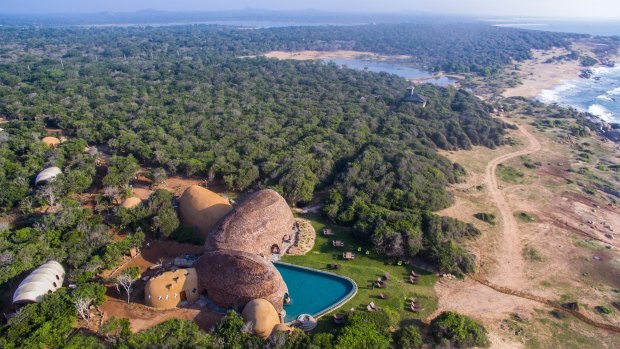
THE BACKSTORY In 1983, civil war broke out. By the time it ended in 2009, an estimated 100,000 Sri Lankans had died.
THE COMEBACK Following the end of the war, the government focused on tourism as a way of recharging the economy. Visitor numbers grew 300 per cent between 2009 and 2015.
MUST DO Sri Lanka is remarkably diverse. You can visit ancient cities such as Polonnaruwa and hill stations such as Nuwara Eliya, as well as ancient rock temples and national parks that are home to elephants, leopards and sloths.
STATUS AND THREATS Success brings its own challenges, and Sri Lanka is facing a shortage of tourism staff. Rapid development of new hotels may also result in overdevelopment. Smart Traveller advises exercising normal safety precautions.
ESSENTIALS Best time to visit is between December and March. Intrepid Travel's 15-day Circle Sri Lanka includes visits to Sigiriya, the ruined cities of Anuradhapura and Polonnaruwa, and the cave temples at Dambulla. From $2583. See srilanka.travel, intrepidtravel.com
THE COUNTRY Colombia
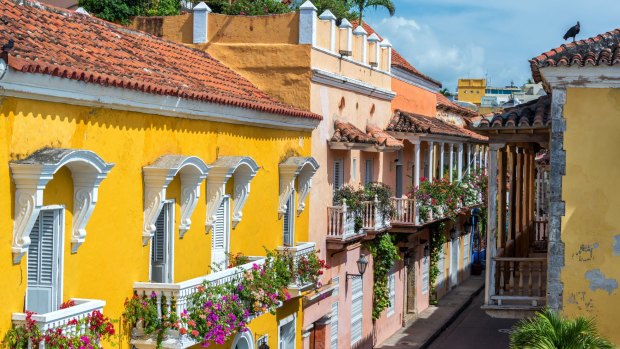
Credit: Alamy
THE BACKSTORY For more than two decades violence was endemic in Colombia, where cocaine cartels effectively ruled the country and Farc guerrillas staged an ongoing rebellion.
THE COMEBACK Since Colombia's most notorious drug lord, Pablo Escobar, was shot dead in 1993, Colombia has been reinventing itself and campaigning for more tourists. Tourist numbers are growing, and will probably increase further following last year's signing of a peace deal with Farc.
MUST DO The colonial city of Cartagena, on the Caribbean coast, is Colombia's most famous attraction, but Bogota and Medellin are also appealing, as are the scenic Central Highlands.
STATUS AND THREATS Even with Farc out of action, Smart Traveller advises a high degree of caution due to threats of terrorism and criminal activity.
ESSENTIALS Colombia's equatorial climate makes it a year-round destination. Butterfield & Robinson's seven-day Colombia Active Expedition takes in Bogota, Medellin, Cartagena and the central highlands. From $US5995. See colombia.travel/en, butterfield.com
THE COUNTRY Zimbabwe

Credit: Alamy
THE BACKSTORY Following President Mugabe's forced land redistribution program in 2000, international sanctions were imposed on Zimbabwe, which, combined with entrenched corruption and government mismanagement, destroyed the national economy.
THE COMEBACK Between 1999 and 2013, European visitor numbers declined 60 per cent, with similar drops across the board. Mugabe's ouster last year offers the country a chance to revive its international reputation – and its tourism industry.
MUST DO Zimbabwe is considered to be one of Africa's best safari destinations, with large numbers of game and small numbers of tourists. Top sights include the 1.5 million hectare Hwange National Park, which has the continent's largest elephant population, and Victoria Falls.
STATUS AND THREATS Zimbabwe's recovery will depend on whether or not new President Mnangagwa chooses a different path from his predecessor. Smart Traveller advises exercising a high degree of caution, due to the ongoing risk of crime and the potential for civil unrest and political violence.
ESSENTIALS The best game viewing can be enjoyed between May and September, while the best time to visit Victoria Falls is between April and May. Bench Africa's seven-day Safari of Legends takes in Victoria Falls and Hwange National Park. From $2705. See zimbabwetourism.net, benchafrica.com
THE COUNTRY Nepal
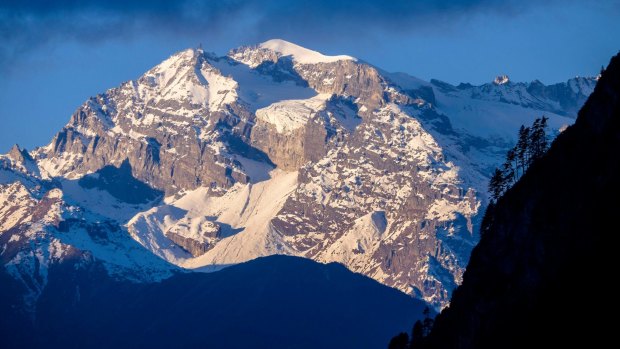
Credit: Alamy
THE BACKSTORY A devastating earthquake in 2015 left thousands dead, thousands more homeless, and ruined many of the country's roads, not to mention Kathmandu's royal palaces and temples.
THE COMEBACK Although visitor numbers plunged immediately after the earthquake, Nepal has made a relatively quick comeback, with arrivals almost back to normal. This may reflect not just Nepal's status as a bucket-list destination, but also the fact that Nepal tends to draw more adventurous visitors.
MUST DO Nepal is all about mountain landscapes, and most of the popular trekking trails have been quickly restored to peak condition. With most of the damage centred around Kathmandu, destinations such as Annapurna are as inviting as ever.
STATUS AND THREATS Reconstruction is ongoing in Kathmandu, which was hit hard by the quake, especially the World Heritage-listed Durbar Square. Smart Traveller advises a high degree of caution.
ESSENTIALS October and November are the best months to visit Nepal. World Expeditions' 10-day Annapurna Trek includes treks through oak and rhododendron forests, traditional Hindu villages and dramatic mountain views. From $2150. See welcomenepal.com, worldexpeditions.com
THE COUNTRY Serbia
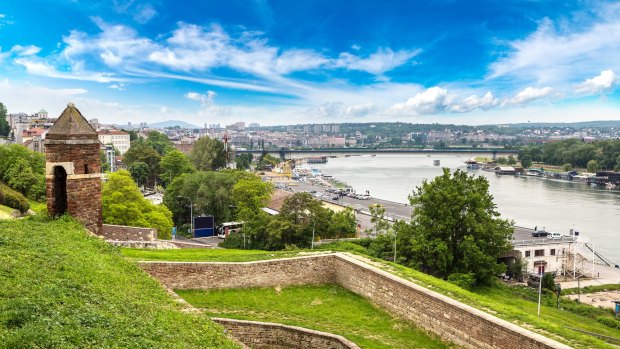
Credit: Shutterstock
THE BACKSTORY After the Balkan Wars of 1991-99, Serbia – which was bombed by NATO for 11 weeks in 1999 – has been unable to replicate the tourism success of neighbouring – and one-time enemy – Croatia.
THE COMEBACK Oddly enough, it was Belgrade's happening nightclubs that first attracted visitors from across Europe. Since then, visitor numbers have grown slowly, as travellers discover Serbia's historic cities and its spectacular countryside.
MUST DO The cities of Belgrade and Novi Sad are among the country's biggest attractions, along with spectacular national parks such as Kopanonik and Zlatibor, which offer wonderful skiing in winter and hiking in summer.
STATUS AND THREATS Until now, most visitors to Serbia have been drawn from neighbouring countries. If Serbia can raise its international profile, it has tremendous opportunities to grow its tourism industry. Smart Traveller advises exercising normal safety precautions.
ESSENTIALS Best time of year to visit is between April and May and September and October. Exodus Travels' nine-day Serbia – Gem of the Balkans includes visits to Belgrade, Novi Sad, the Uvac Special Nature Reserve and the World Heritage-listed Studenica monastery. From $2085. See serbia.travel, exodustravels.com/au
THE COUNTRY Myanmar
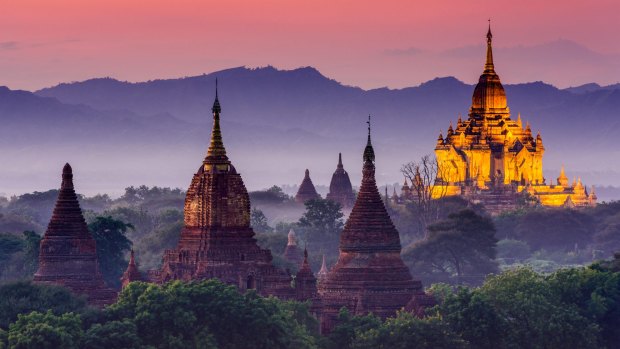
Credit: Alamy
THE BACKSTORY The 1996 tourism boycott launched by forces opposing the country's military dictatorship was widely adopted around the world.
THE COMEBACK The boycott was lifted after then-opposition leader Aung San Suu Kyi – now de facto head of state – was released from house arrest in 2010. Since then, tourism has boomed; while the exact numbers are rubbery, visitors seem to have tripled between 2010 and 2016.
MUST DO Myanmar has plenty of crowd-pleasing ancient temples and beautiful scenery, from the tranquil Inle Lake and the temples of Bagan, one of Asia's greatest sights.
STATUS AND THREATS As the country races to develop infrastructure for its booming tourism market, overdevelopment is becoming an issue. Erosion and pollution at Inle Lake are causing concern, while the hotels built in the Bagan Archaeological Zone have affected its campaign for World Heritage status. The ongoing violence against the Rohingya minority – described as genocide by the UN – may see a drop in visitor interest.
ESSENTIALS The best time of year to visit is between November and February. Sanctuary Retreats' four-night Mandalay to Bagan cruise includes visits to the golden Shwezigon Pagoda and the timeless village of Pakokku. From $US1099. See myanmar.travel, sanctuaryretreats.com
FIVE CITIES THAT CAME BACK FROM THE BRINK
BERLIN, GERMANY
Before 1989, Berlin was best known for the heavily fortified wall which separated the city's two halves. After East and West Germany reunified in 1990, Berlin once again became the German capital and, as a bonus, reinvented itself as one of Europe's coolest cities, a place known for its nightlife and its art scene as well as its history. See visitberlin.de/en
CHRISTCHURCH, NEW ZEALAND
The devastating 2011 earthquake left 80 per cent of the central city destroyed and saw the CBD closed for two years. Christchurch has struggled to attract tourists since then, but this year visitor numbers reached 500,000 for the first time since 2011. The city's top attractions include such post-earthquake landmarks as Shigeru Ban's Cardboard Cathedral and the White Chairs memorial. See christchurchnz.com
SARAJEVO, BOSNIA-HERZEGOVINA
The Balkan Wars of the 1990s saw the capital of Bosnia-Herzegovina devastated by a Serb siege that lasted almost four years and killed more than 10,000 people. These days, Sarajevo has one of the highest tourism growth rates in the world. Tourism has grown by more than 10 per cent year on year since 2000, with visitors as interested in the city's bleak history as in its verdant surrounds.
NEW ORLEANS, UNITED STATES
A decade after the devastation of 2005's Hurricane Katrina, New Orleans is as much of a tourist magnet as ever, with a record-breaking 10.45 million visitors in 2016. While the French Quarter is popular, it has been joined by new attractions such as Crescent Park and the hip Bywater neighbourhood. See neworleansonline.com
MARSEILLE, FRANCE
Once notorious for gangs, drugs and violence, France's second-largest city used its stint as the European Capital of Culture to reinvent itself. Six billion euros worth of investment later, the city is one of Europe's top cruise ports, with cutting-edge architecture, glamorous museums and Michelin-starred restaurants. See marseille-tourisme.com/en
FIVE COUNTRIES WE'D LOVE TO MAKE A COMEBACK
TURKEY
Turkey is blessed with ancient ruins, underground cities and beautiful beaches, but a constant spate of bad news stories – from terror attacks to an ongoing state of emergency – has sent Turkey's tourism industry into freefall.
SYRIA
From the souks of Aleppo to the mighty Crusader fortress of Krak des Chevaliers to the ancient ruins of Palmyra, Syria was once one of the Middle East's most fascinating destinations. Sadly, many of these attractions have been all but destroyed during six years of ferocious fighting.
VENEZUELA
Hyperinflation, food shortages, high crime levels and an ongoing political crisis have made Venezuela a no-go zone. The spectacular landscapes – including lush jungles, waterfalls and beautiful beaches – seem likely to remain off-limits for the foreseeable future.
TUNISIA
From its verdant coast to the Sahara desert and the spectacular Punic and Roman ruins, this North African country was gaining a reputation as an underrated gem before sunbathers at a coastal hotel were gunned down more than two years ago.
AFGHANISTAN
Decades of conflict have all but erased the memory of Afghanistan's tourism heyday, but back in the 1970s, this was one of the highlights of the "hippy trail". Travellers fell in love with its stunning landscapes, its archaeological sites and its friendly people.
Sign up for the Traveller Deals newsletter
Get exclusive travel deals delivered straight to your inbox. Sign up now.